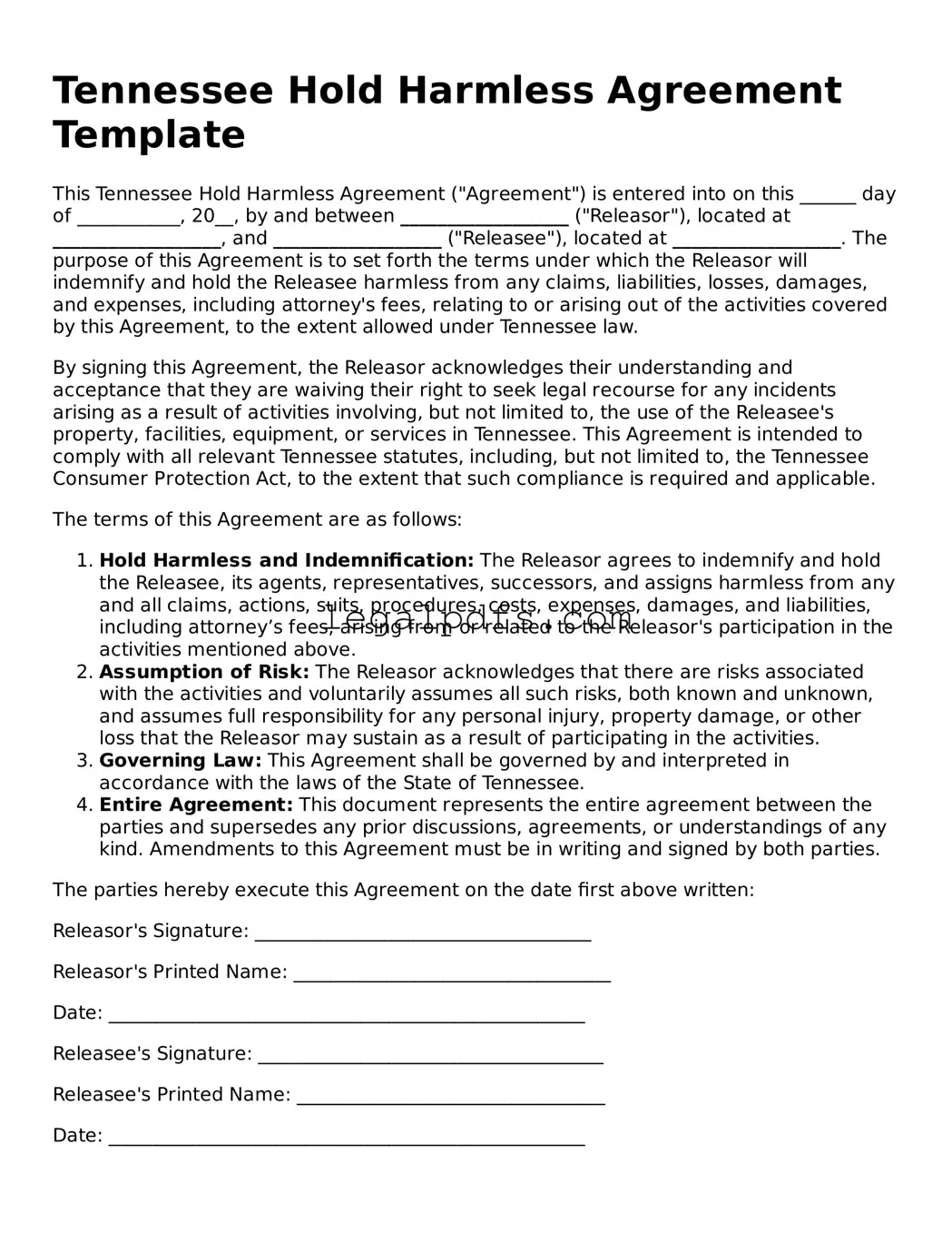Tennessee Hold Harmless Agreement Template
This Tennessee Hold Harmless Agreement ("Agreement") is entered into on this ______ day of ___________, 20__, by and between __________________ ("Releasor"), located at __________________, and __________________ ("Releasee"), located at __________________. The purpose of this Agreement is to set forth the terms under which the Releasor will indemnify and hold the Releasee harmless from any claims, liabilities, losses, damages, and expenses, including attorney's fees, relating to or arising out of the activities covered by this Agreement, to the extent allowed under Tennessee law.
By signing this Agreement, the Releasor acknowledges their understanding and acceptance that they are waiving their right to seek legal recourse for any incidents arising as a result of activities involving, but not limited to, the use of the Releasee's property, facilities, equipment, or services in Tennessee. This Agreement is intended to comply with all relevant Tennessee statutes, including, but not limited to, the Tennessee Consumer Protection Act, to the extent that such compliance is required and applicable.
The terms of this Agreement are as follows:
- Hold Harmless and Indemnification: The Releasor agrees to indemnify and hold the Releasee, its agents, representatives, successors, and assigns harmless from any and all claims, actions, suits, procedures, costs, expenses, damages, and liabilities, including attorney’s fees, arising from or related to the Releasor's participation in the activities mentioned above.
- Assumption of Risk: The Releasor acknowledges that there are risks associated with the activities and voluntarily assumes all such risks, both known and unknown, and assumes full responsibility for any personal injury, property damage, or other loss that the Releasor may sustain as a result of participating in the activities.
- Governing Law: This Agreement shall be governed by and interpreted in accordance with the laws of the State of Tennessee.
- Entire Agreement: This document represents the entire agreement between the parties and supersedes any prior discussions, agreements, or understandings of any kind. Amendments to this Agreement must be in writing and signed by both parties.
The parties hereby execute this Agreement on the date first above written:
Releasor's Signature: ____________________________________
Releasor's Printed Name: __________________________________
Date: ___________________________________________________
Releasee's Signature: _____________________________________
Releasee's Printed Name: _________________________________
Date: ___________________________________________________
